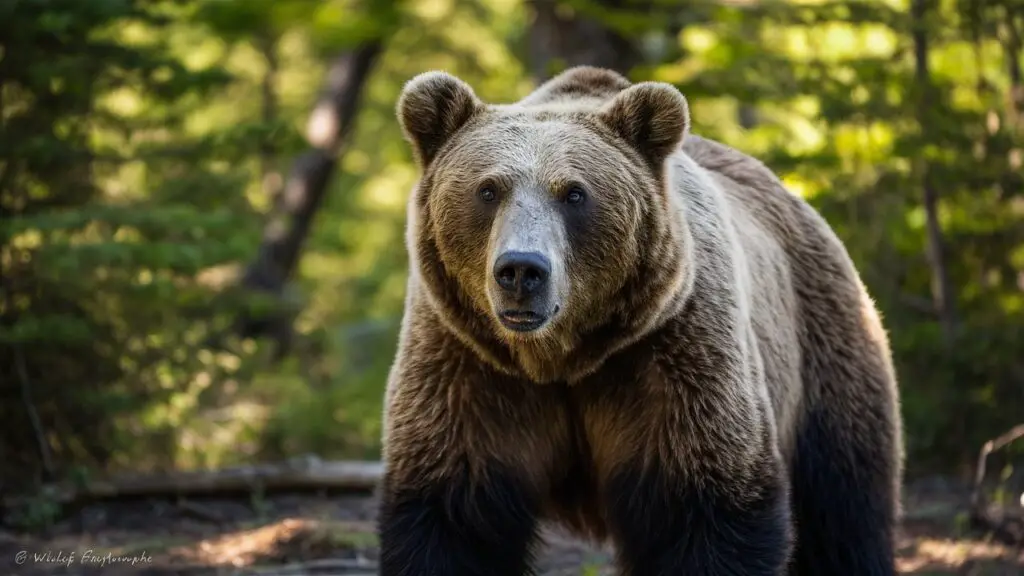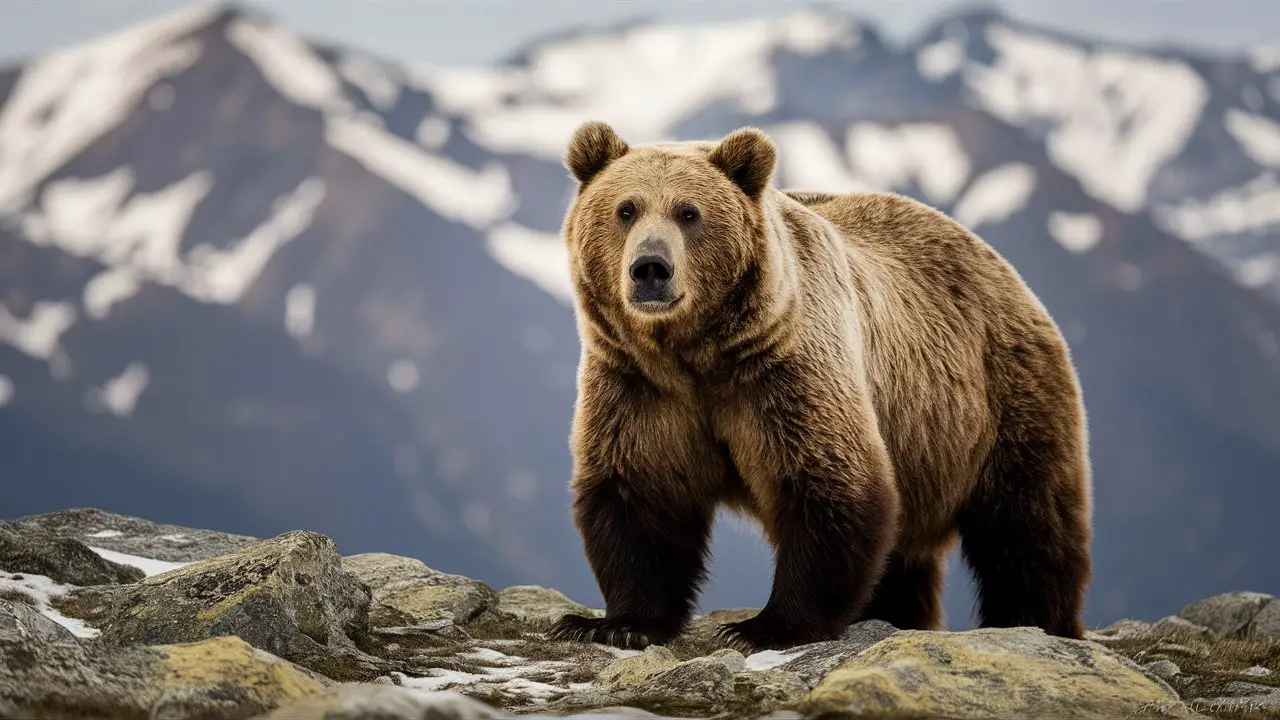As you venture into the wilderness of western North America, you may encounter one of the continent’s largest and most powerful predators, the grizzly bear. Understanding the habitat and range of this awe-inspiring animal is essential for your safety and enjoyment of wild places. This comprehensive guide provides key details about where grizzly bears live, their preferred terrain and vegetation, seasonal habitat usage, and recent shifts in their territory. Arm yourself with knowledge by learning what attracts grizzly bears to certain locales across their expansive range spanning Alaska to Mexico. Whether you are a wildlife enthusiast, hiker, hunter, or park ranger, insights from this guide will help you coexist responsibly with these iconic giants and explore their domain with greater awareness and respect.
Grizzly Bear Habitat: Where Do Grizzlies Live?
Grizzly bears inhabit a diverse range of habitats across North America, primarily in Alaska, western Canada, and the northwestern United States. ###Forests Grizzly bears tend to prefer dense forest habitats, especially in mountainous and coastal areas. They inhabit a variety of forest types, including temperate rainforests, pine forests, and hardwood forests. Forests provide grizzlies with cover, shelter, and opportunities to forage for food.
Tundra
Some grizzly bear populations inhabit tundra regions in northern Canada and Alaska. The tundra provides seasonal feeding opportunities, such as berries, roots, and small mammals. However, the harsh, open landscape offers little shelter or cover, so grizzlies tend to remain in tundra habitats primarily during summer.
Riparian Areas
Grizzly bears frequently inhabit riparian areas, such as river valleys and lake shores. These areas contain lush vegetation and abundant food sources, such as fish, small mammals, and plants. Grizzlies use riparian habitats for feeding, traveling, and in some cases, denning.
Mountain Ranges
Grizzly bears occupy mountain ranges throughout their range, especially in the western United States and Canada. Mountain habitats provide shelter and opportunities to feed on plants, roots, small mammals, and ungulates. Some grizzly populations remain at high elevations throughout the year, while others migrate to lower elevations during winter.
In summary, grizzly bears occupy a variety of habitat types across their range, including forests, tundra, riparian areas, and mountain ranges. Although their habitat preferences vary based on geographic location and season, grizzlies tend to favor areas that provide ample cover and diverse feeding opportunities. Protecting and conserving grizzly bear habitat is crucial to ensuring the long term survival of this iconic species.
Key Features of Grizzly Bear Habitat
Ample Space
Grizzly bears are large mammals that require vast amounts of space. An adult male can have a home range of up to 1,500 square miles. Females tend to have smaller ranges of 200 to 500 square miles. Within these ranges, grizzlies need areas for feeding, breeding, and raising cubs with minimal human disturbance. Their habitat must include forest areas, mountainsides, rivers, and meadows.
Food Sources
Grizzly bears are omnivores, so their habitat must provide ample plant and animal food sources. Important plant foods include grasses, roots, tubers, nuts, and berries. Salmon and trout are also essential food sources for many grizzly bear populations. Grizzlies will also prey on small mammals like ground squirrels, marmots, and hares. A grizzly bear’s diet varies based on the season and location, so their habitat must include a diverse range of food options.
Shelter
Although grizzly bears do not hibernate, they require shelter during the winter and a den in which females can give birth to cubs. Dens are often located in remote, undisturbed areas. Females will dig into the side of a mountain or hill to create a small cave. The den provides protection from harsh weather and predators while the female nurses her cubs through the first few months of life.
Minimal Human Disturbance
Grizzly bear populations have declined due to human activity like logging, mining, and road building. Their habitat must have limited human disturbance and encroachment. Remote, wilderness areas with strict protections are ideal for grizzly bears. Human activity can disrupt feeding, breeding, and cub-rearing behaviors, so minimal human traffic and development are essential for grizzly bear survival and habitat.
In summary, grizzly bears require vast amounts of undisturbed space with access to diverse food sources and shelter. Protecting and conserving habitat with these key features is critical for sustaining healthy grizzly bear populations into the future.
Grizzly Bear Size and Physical Traits
Grizzly bears are one of the largest terrestrial mammals in North America. Adults typically weigh between 400 to 790 pounds, standing up to 8 feet tall on their hind legs. Their massive size and muscular build are defining physical characteristics, adapted for digging and catching fish.
Fur and Coloration
Grizzly bears have thick, coarse fur that varies in color from light brown to nearly black. Their fur is typically darker on their legs and lighter on their face and shoulders. Grizzly bears molt once a year, shedding their winter coat for a lighter summer coat. Their coloration provides camouflage and helps regulate body temperature in different seasons.
Claws and Teeth
Grizzly bears are omnivores, feeding on both plants and animals. They have sharp claws and teeth well suited for their diet. Their claws, which can reach up to 6 inches in length, are used for digging roots, catching fish, and opening logs to access insects. Their large canine teeth and molars allow them to consume a wide range of foods, from nuts and berries to elk calves.
Bulk and Hibernation
A grizzly bear’s immense bulk, especially the fat stores they build up before hibernating, allows them to survive winter without food. Grizzly bears are well adapted for hibernation, with biological mechanisms to lower their heart rate and metabolism during long periods of inactivity. Female grizzly bears give birth during hibernation and nurse their cubs until spring, relying entirely on the fat reserves they built up the previous summer and fall.
Grizzly bears’ considerable size and specialized physical adaptations allow them to inhabit a wide range in North America, from coast to coast. Their diverse diet, hibernation abilities, and seasonal changes in fur have enabled them to become well established in various ecosystems and climates across the continent. Understanding their physical characteristics provides insight into how they have become such successful and resilient animals.

Grizzly Bear vs Brown Bear: What’s the Difference?
Grizzly bears and brown bears are closely related, but there are a few key differences to note. Grizzly bears and brown bears belong to the same species, Ursus arctos, but grizzly bears are considered a subspecies, Ursus arctos horribilis. Grizzly bears tend to be larger in size and more aggressive in temperament compared to brown bears.
Size and Appearance
Grizzly bears have a distinctive shoulder hump and a concave facial profile. They are generally larger in size, weighing up to 600 pounds. In contrast, most brown bears weigh between 200 to 600 pounds. Grizzly bears also tend to have longer, curved claws, which they use for digging. Their fur tends to be lighter in color, ranging from blond to dark brown.
Habitat and Range
Grizzly bears have a more restricted range, found mainly in western Canada and Alaska. They inhabit mountainous areas, prairies and river valleys. Brown bears have a wider distribution, found in northern Asia, Europe, and parts of Canada and Alaska. They occupy a variety of habitats, including coastal rainforests, mountain forests, and tundra.
Behavior
Grizzly bears tend to be more aggressive and solitary compared to the generally more tolerant brown bears. Grizzly bears are more likely to defend kills against other predators. They are also more prone to defending their cubs aggressively. Brown bears tend to be less territorial and defensive of food sources, and females are more tolerant of other bears around their cubs.
While similar in many ways, grizzly bears and brown bears have some distinct characteristics that set them apart. Understanding these differences can help in identification and in knowing how to properly respond if encountering one of these large predators in the wild. Always exercise caution around these powerful bears.
Grizzly Bear Habitat FAQs: Your Top Grizzly Bear Habitat Questions Answered
Where do grizzly bears live?
Grizzly bears inhabit diverse geographical ranges across western North America, from Alaska to parts of the continental United States. Their historical range once spanned from the Arctic in the north to Mexico in the south and from the Pacific to the Great Plains. However, due to human activity and habitat loss, grizzly bear populations have become fragmented and isolated. Today, grizzly bears occupy only about 2% of their former range, living mostly in remote mountain areas and coastal rainforests.
What kind of habitat do grizzly bears prefer?
Grizzly bears prefer habitats that provide adequate food sources and cover. They tend to inhabit mountainous areas, coastal rainforests, tundra, and river valleys. Dense vegetation, especially areas with berry-producing shrubs, wet meadows, and streams with spawning salmon, provide ideal habitat conditions. Grizzly bears are opportunistic omnivores, so they seek out areas that provide a variety of nuts, roots, grasses, insects, fish, and small mammals.
Do grizzly bears hibernate?
Yes, grizzly bears are well adapted for hibernation during winter when food is scarce. Grizzly bears enter their dens in late October or November and emerge in April or May. Pregnant females give birth during hibernation and nurse their cubs until spring. Hibernation allows grizzly bears to conserve energy during winter when food is limited. Their heart rate, metabolism, and body temperature decrease dramatically during hibernation.
How large is a grizzly bear’s home range?
An adult male grizzly bear can have a home range of up to 1,500 square kilometers. Females typically have smaller home ranges of 200 to 500 square kilometers. A grizzly bear’s home range depends on the availability of food sources and the gender of the bear. Home ranges tend to be larger in less productive habitats. Grizzly bears are generally solitary, but they are not strictly territorial and home ranges often overlap.
In summary, grizzly bears inhabit a diversity of mountainous and coastal habitats across western North America. They prefer areas that provide abundant food sources and cover, such as shrublands, wet meadows, and salmon streams. Although grizzly bears were once widely distributed, their populations have become fragmented due to habitat loss and human activity. With conservation efforts focused on protecting habitat and food sources, grizzly bears continue to survive and even expand into parts of their former range.
Don’t Miss a Thing! Enhance Your Wildlife Photography with Ultra-X Night Vision Goggles.
GET NOW!

Conclusion
Through understanding the habitat needs and range of the grizzly bear, you gain greater insight into this iconic North American species. Consider the lessons outlined here as you enjoy the wilderness responsibly and promote thoughtful conservation policies. While challenges remain, grizzly bears represent the triumphant spirit of the western frontier. Approach any encounter with care, respect and awe for these majestic creatures. You now have the knowledge to explore grizzly territory safely. Spread awareness of their struggle and champion their rightful place in the wild. With this guidance, you are prepared to coexist with grizzly bears on their turf.





